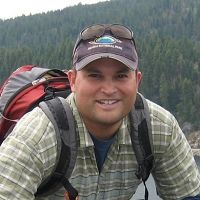McNamara et al. 2017
Form and function relationships revealed by long-term research in a semiarid mountain catchment
McNamara, J.P., Benner, S.G., Poulos, M.J., Chandler, D., Marshall, H.P., Flores, A.N., Seyfried, M., and N.F. Glenn (2017)
WIREs Water
-
Reynolds, COLLABORATOR
-
Reynolds, INVESTIGATOR
-
Reynolds, INVESTIGATOR
-
Reynolds, INVESTIGATOR
Abstract
Fifteen years of cumulative research in the Dry Creek Experimental Watershed in southwest Idaho, USA, has revealed relationships between catchment form and function that would not have been possible through independent short‐term projects alone. The impacts of aspect and elevation on incident energy and water, coupled with climate seasonality, have produced tightly connected landform properties and hydrologic processes. North‐facing hillslopes have steeper slope angles, thicker soil mantles, finer soil texture, and higher water holding capacities than their south‐facing counterparts. This trend is modulated by elevation and vegetation; higher elevation sites, where aspect differences in vegetation are less evident, exhibit less distinct hydrologic properties. The storage of water first as snow, then as soil moisture determines how upland ecosystems survive the seasonal and persistent water stress that happens each year, and sustains streamflow throughout the year. The cumulative body of local knowledge has improved general understanding of catchment science, serves as a resource for conceptual and numerical evaluation of process‐based models, and for data‐driven hydrologic education. WIREs Water 2018, 5:e1267. doi: 10.1002/wat2.1267
Citation
McNamara, J.P., Benner, S.G., Poulos, M.J., Chandler, D., Marshall, H.P., Flores, A.N., Seyfried, M., and N.F. Glenn (2017): Form and function relationships revealed by long-term research in a semiarid mountain catchment. WIREs Water. DOI: 10.1002/wat2.1267
Explore Further




